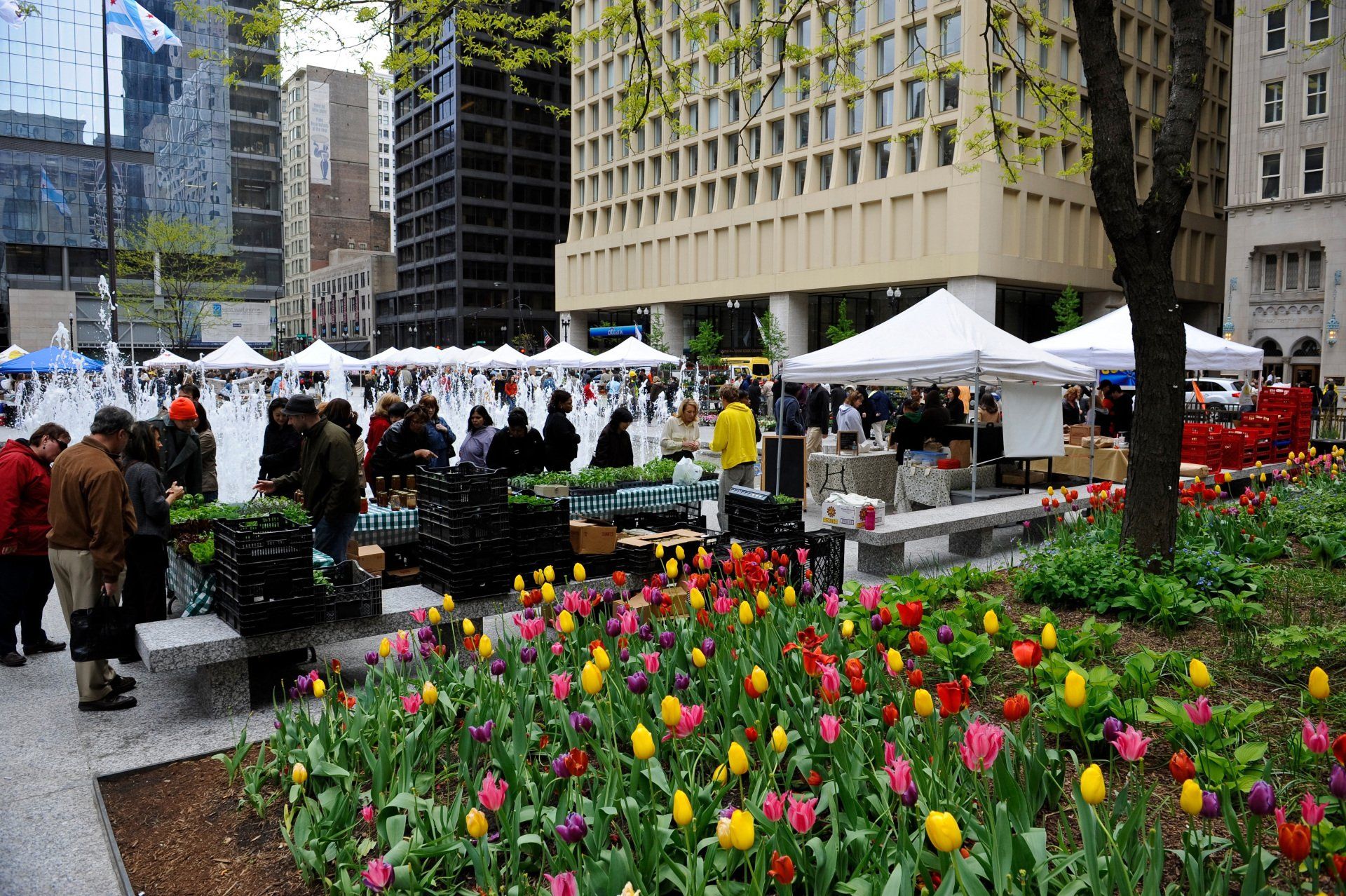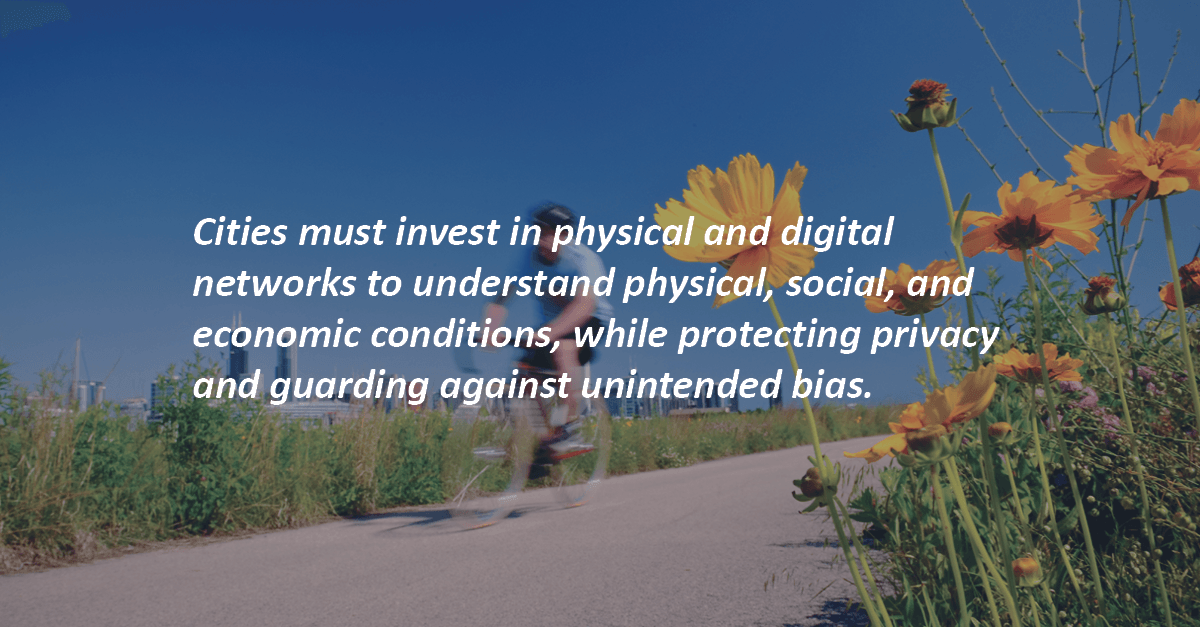Cities’ Post-COVID Agenda
Coronavirus Exposed Opportunities for Radical Urban Innovation and Inclusive Resident Engagement – Will We Make Good on Them?
Cities are beginning to break
COVID-19’s year-long grip on urban life.
Though herd immunity remains elusive and viral variants pose uncertain
risks, this spring offers hope after a long, dark winter.
We’re only beginning to understand,
mourn, and cope with the human, social, and economic losses COVID-19 has
wrought. But today’s recovery decisions
and investments will decide whether and how cities will regroup after a year of
tragedy and disruption.
Getting back to normal will
require coordinated efforts among local, national, and global partners – which is
challenging under the very best circumstances.
But the last 12 months have showed us, often painfully, that “normal”
just isn’t what it used to be. COVID-19 (and
other social, economic, and environmental upheavals) exposed deep rifts and blind
spots, and it also opened our eyes to hidden sources of inspiration and
resilience. The coronavirus shined a
harsh light on historical inequities and urban shortcomings, but it also showcased
people’s capacity for profound change and innovation.
If only we could harness these
positive forces without the loss and anxiety of a deadly pandemic, we’d have a
fighting chance to develop the partnerships and solutions that cities need and
deserve. As centers of commerce,
culture, and innovation, cities have a unique responsibility to embrace a post-COVID
urban agenda that welcomes all
residents back to public life and that
strives to make our cities stronger and more resilient to future catastrophes.
2020 revealed the terrible cost of
obliviousness. COVID became a focusing
lens on new priorities as well as longstanding challenges that seemed too big
or complicated for immediate action. Cities
can’t afford to lose that focus as vaccines begin to flow.
As a Chicago-based urban solutions accelerator, City Tech is developing practical solutions to support safe reopening of public transportation and shared urban spaces, and we’ve had a unique vantage point on COVID-era innovations with long-term potential to strengthen our cities. But together, we can do more.
Local governments acted valiantly to respond to the challenges of 2020. But reactive
governance has clear limits. COVID underscored the need to know what’s happening within our cities and communities in as close to real-time as possible. COVID caught us unaware, and cities struggled to gather and share the data that ultimately informed our response.
Through some combination of willful denial, benign neglect, and blissful ignorance, many civic leaders and residents discovered that they didn’t really understand local issues of inequity that have resulted from years of systemic racism, bias, and underinvestment. COVID forced all of us to face the brittleness of urban health care, education, and transportation systems, even as it showcased the fragility of municipal budgets.
And coronavirus wasn’t the only disaster lurking in the shadows. The decay of urban infrastructure, pervasive housing shortages and homelessness, and climate change – among other looming crises – pose similar threats to cities’ vitality. The breadth of urban activity and operations make it hard to know what’s important – until a global pandemic forces children from school, empties out business districts, and disproportionately cripples our most vulnerable residents and communities. Going forward, local leaders need to get out of their own heads and begin to function as the brains and nerve centers of the communities they serve. Deeply and directly connected municipal governments are better able understand, anticipate, and prevent catastrophes.
Cities must invest in physical and digital networks to understand physical, social, and economic conditions, while protecting privacy and guarding against unintended bias.
Though mask and shutdown mandates played a critical role, cities ultimately aren’t commanding-and-controlling their way out of COVID. PPE, testing, and hospital overflow centers couldn’t do much good without 21st century data collection, analysis, and public transparency. Continuing to develop these critical capabilities will fuel the innovation needed to address the next crisis, whatever it may be.
Innovation comes in as many flavors and varieties as the ice cream delivery options that carried some of us through the pandemic. Cities often innovate incrementally
, by adopting technology that’s been proven and adopted by the private sector or by making local adjustments or relatively minor upgrades to programs and policies that have been implemented elsewhere. This happens with good reason, as budget and election cycles reward short-term improvement.
But COVID showed us another way to transform cities by breaking old habits and smashing the status quo. Incremental improvement is important, but cities must also foster radical innovation
in response to the jolt we’ve all just experienced. In a Harvard Business Review article from 2018 ( link
), Christian Hopp, David Antons, Jermain Kaminski, and Torsten Salge analyzed 40 years of business research to define radical innovation as stemming “from the creation of new knowledge and the commercialization of completely novel ideas or products.”
Radical innovation often begins with visionary individuals and organizations that see the world differently and take bold action to drive dramatic change. A government driven solely by radical innovation could quickly become unstable and unsettling to residents and businesses. Following the (hopefully) once-in-a-lifetime experience of 2020, it would be a missed opportunity for cities not to rethink certain aspects of urban life.
Cities couldn’t (and can’t) solve COVID at
residents. We’re witnessing the ongoing need for residents to be active participants in meaningful solutions. It doesn’t matter how quickly we sequenced COVID’s genome or developed new vaccines; people’s behavior made the difference between resilience and disaster. That same dynamic applies to other urban innovations, from urban planning and public space priorities, to community health, to universal broadband connectivity, improving environmental quality, education, housing, and more.
In her autobiography “My Beloved World,” US Supreme Court Justice Sonia Sotomayor asserts that “there are uses to adversity, and they don’t reveal themselves until tested… difficulty can tap unsuspected strengths.” The strength of cities runs deep, and so does the power of collaborative innovation among public officials, residents, corporations, and civic institutions.
Though we can’t drop our guard against COVID-19 in the coming months, it’s time for cities to recognize and lock in the learning and experience that are bringing us through the current pandemic and can help carry us forward to happier, healthier, and more productive days ahead.
About the Authors:
Brenna Berman
serves as CEO & Executive Director of City Tech Collaborative, an urban solutions accelerator that tackles problems too big for any single sector or organization to solve alone. Prior to joining City Tech, Brenna served in Chicago Mayor Rahm Emanuel’s administration, which she joined in 2011. She served as the Chief Information Officer for the City and Commissioner for the Department of Innovation & Technology (DoIT) from 2012 to 2017. During her tenure as CIO, Brenna delivered on the Mayor’s commitment to a robust open data program, integrated advanced analytics into many city departments, drove IoT innovation for the City through unique partnerships at City Tech and the founding of the Midwest IoT Council, and, in partnership with the University of Chicago, realized the vision of urban-scale sensing with the Array of Things. Prior to joining the Emanuel Administration, Brenna built a career promoting government innovation over 10 years at IBM, where she worked closely with government agencies in cities and countries across the world to leverage technology and analytics to improve the services they provide to their residents. Brenna earned her bachelor's degree and master's degree in Public Policy from the University of Chicago.
Jamie Ponce
is the Director of Strategic Partnerships at City Tech Collaborative where he works to drive breakthrough solutions to critical city challenges using technology, data analytics, and collaboration. He previously served as Director of Innovation with the Environmental Law & Policy Center, a public interest and environmental advocacy group focused on clean energy, transportation, air, and water throughout the US Midwest. From 2012-16, Jamie was the Chicago Director of Energy and Climate Innovation with the C40 Cities Climate Leadership Group, where he led initiatives on energy efficiency, sustainable development, food, and climate in the office of Chicago Mayor Rahm Emanuel and across a network of global megacities. Prior to these roles, Jamie spent 10 years with global management consulting firm A.T. Kearney, specializing in corporate strategy, economic development, and resource efficiency. Jamie holds a bachelor’s degree from Indiana University, a Master in Public Administration from the Harvard Kennedy School, and an MBA from Harvard Business School.

